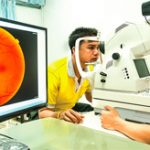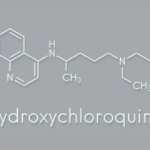
Dr. Rosenbaum
James T. Rosenbaum, MD, a professor of ophthalmology, medicine and cell biology and the chair of the Division of Arthritis and Rheumatic Diseases at Oregon Health & Science University, Portland, is one author of the recent statement. He contrasts HCQ with a drug like infliximab, whose safety is monitored by the prescribing physician.
“We have a medicine that is incredibly valuable that we’re prescribing. At times, there is a totally different doctor saying, ‘Don’t take this,’” says Dr. Rosenbaum. This can be very frustrating for rheumatologists or other prescribing clinicians.
Rheumatologists, ophthalmologists and other specialists may have differing perspectives on ideal dosing and risk/benefit analysis of HCQ, partly due to some areas of incompleteness in the medical literature. Dr. Rosenbaum points out that we don’t know the minimally effective dosage of HCQ, partly because it is such a slow-acting drug. “We don’t know if, for example, a dose of 200 mg a day would be efficacious for the majority of people,” he says.
Because of this, the study authors did not propose an ideal dosage to manage possible risks and benefits. However, in line with the 2016 AAO recommendations, they note data from the most extensive study on retinopathy in HCQ to date. In this study, an average prescription of 5.0 mg/kg (actual weight) or less per day caused a less than 2% risk of toxicity in patients who had used the drug for up to 10 years.6
Higher daily doses increase the risk to about 10% after 10 years of use, with the risk continuing to rise over time. However, the authors note that for patients who have a normal screening exam, the risk of developing retinopathy in the following year is less than 5%, even in patients who have used the drug for 20 years.6
Overall, the statement authors emphasize the value of HCQ and concur that it can be safely used when given at an appropriate dose and with recommended eye screenings. The statement authors also agree that certain populations warrant special consideration when considering dose and monitoring frequency, for example, patients with reduced renal function.
“The goal of the committee was not to frighten people from using the medicine. The goal of the committee was to make a safe medicine even safer,” notes
Dr. Rosenbaum.
Better Screening Technologies
The study authors underscore the essential role of proper ophthalmological screening in preventing eye complications in all patients.
Dr. Rosenbaum points out that such tools as optical coherence tomography (OCT) and visual fields testing have revolutionized the ability to monitor eye toxicity. OCT provides an incredibly detailed image of the eye, almost as if one were doing a biopsy in living tissue. Dr. Rosenbaum says, “That technology has enabled ophthalmologists to recognize early changes due to [hydroxychloroquine], which otherwise we probably would not have been aware of.” Such tests should be readily available to almost all eye care professionals responsible for HCQ
toxicity screening.
The statement authors recommend such testing within a few months after HCQ is started (to assess for baseline disease, which may complicate later interpretation). They also endorse annual screening, with such tests beginning no more than five years after the drug is started.
The classic description of HCQ retinopathy is of a bull’s eye macular lesion that spares the foveal center, such as might be seen via an ophthalmoscope. However, if patients are regularly monitored with newer screening techniques, such as OCT, damage should be picked up at a much earlier stage, before vision has been affected at all. Adds Dr. Rosenbaum, “If you see something abnormal on the [non-OCT] eye exam, it’s a late finding, and I would almost always recommend stopping the drug.”
In contrast, the authors of the joint statement agree that not all early findings of retinal toxicity via OCT require HCQ be immediately stopped, especially for patients with active rheumatic or dermatologic disease. In cases of definitive and serious retinal damage, cessation is likely warranted. However, borderline cases require more in-depth consideration. With regularly recommended OCT monitoring, many initial eye findings might fall into this category.


